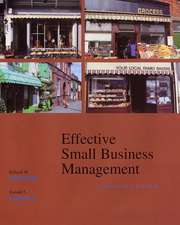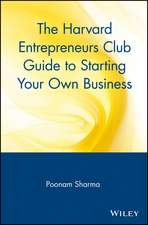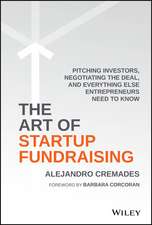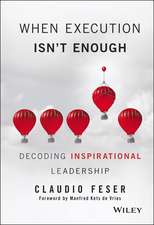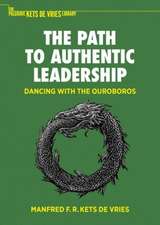Family Business on the Couch – A Psychological Perspective
Autor M Kets de Vriesen Limba Engleză Hardback – 20 sep 2007
Preț: 430.59 lei
Preț vechi: 468.04 lei
-8% Nou
Puncte Express: 646
Preț estimativ în valută:
82.40€ • 89.48$ • 69.22£
82.40€ • 89.48$ • 69.22£
Carte tipărită la comandă
Livrare economică 22 aprilie-06 mai
Preluare comenzi: 021 569.72.76
Specificații
ISBN-13: 9780470516713
ISBN-10: 0470516712
Pagini: 324
Dimensiuni: 152 x 229 x 18 mm
Greutate: 0.61 kg
Editura: Wiley
Locul publicării:Chichester, United Kingdom
ISBN-10: 0470516712
Pagini: 324
Dimensiuni: 152 x 229 x 18 mm
Greutate: 0.61 kg
Editura: Wiley
Locul publicării:Chichester, United Kingdom
Public țintă
Business families and their stakeholders.Descriere scurtă
Cuprins
Preface Acknowledgements PART I: QUESTIONS AND OBSERVATIONS Introduction Endnote 1 A Psychological Perspective on Business Families Psychodynamic and family systemic perspectives Key ideas from the psychodynamic approach The role of transference and countertransference The family systemic perspective A therapeutic alliance A summing-up Endnotes 2 The Challenges of Love and Work Conflicting goals in the family business The tree-circles model How conflict can develop Endnotes 3 Family Business Practices: Assessing Strengths and Weaknesses The interface of business and family practices Assessing the health of a family business Endnotes PART II: REFLECTION AND LEARNING 4 The Life Cycle as an Organizing Construct The multiple life cycles of the family business Key models of human psychological development The family life cycle Carter and McGoldrick's family-based life cycle model Applying the life cycle in family businesses Endnotes 5 Narcissism, Envy, and Myths in Family Firms Personality types Managerial implications of dysfunctional narcissism The importance of individuation The family firm as transitional object The power of envy Games families play: the role of family myths The impact of family myths on the family business Summary Endnotes 6 The Entrepreneur: Alone at the Top Common personality characteristics of founder-entrepreneurs Larry Ellison and Oracle Deciphering the inner theater of the entrepreneur Common defensive structures in founder-entrepreneurs Maintaining the balance Endnotes 7 Leadership Transition: Replacing a Parent as CEO Options for tackling the succession problem The inheritance Psychological pressures on new leaders Staying on course Endnotes 8 A Systemic View of the Business Family A two-way relationship The evolution of systems theory The development of family-systems theory The family-systems proposition Family scripts and rules Family scripts in the family business A practical example of family systems thinking Endnotes 9 Diagnosing Family Entanglements The family genogram The Circumplex Model of marriage and family systems Differentiation of self from family of origin Two family stories Endnotes PART III: INTEGRATION AND ACTION 10 Addressing Transitions and Change Lewin's ideas on change The Kets de Vries model of individual change Major themes in the individual journey toward change The process of change within organizations The change process in families Family focus or organization focus? Endnotes 11 The Vicissitudes of Family Business The Steinbergs: A study in self-destruction The immigrant dream His mother's son The entrepreneur's vision Sam as a family business leader The entrepreneur's dilemma: Passing the baton The next generation Irving Ludmer: Play it again, Sam A family systems perspective on the Steinbergs The effects of Sam Steinberg's inner world on the family business The inner theater of Sam's daughters What if? Endnotes 12 Putting Family Business Intervention into Practice The Family Action Research Process The succession conundrum The role of the outside adviser Advice to families seeking help The benefits pf a psychodynamic systems perspective Final words Endnotes Appendix 1: Developing a Business Family Genogram Creating the genogram Therapeutic applications of the genogram Using the genogram to identify family scripts and themes How genograms improve communication Endnotes Appendix 2: The Clinical Rating Scales and the Circumplex Model How the CRS work Endnotes Index


